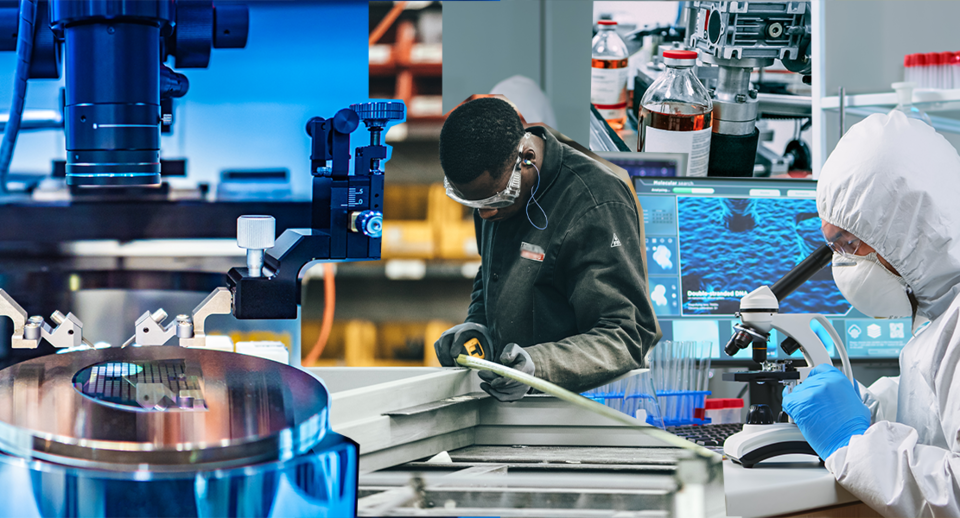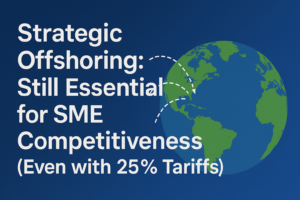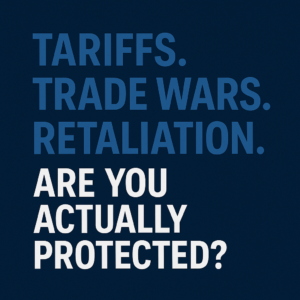
Executive Summary
The clinical diagnostics sector faces relentless pressure to reduce costs while maintaining exceptional quality and reliability. To remain competitive, manufacturers must adopt innovative strategies that optimize their operations and supply chains. Engaging a third-party Design for Manufacturing (DFM) engineering firm to refine product designs for manufacturability, material science, logistics, and inspection can unlock significant cost savings and quality improvements. Pairing these efficiencies with fully managed offshore manufacturing programs in non-tariff countries such as India and Vietnam offers substantial advantages in cost reduction, scalability, and quality assurance. This white paper explores the financial, technological, and business benefits of this approach, highlighting why it’s a strategic imperative for clinical laboratory instrument and diagnostic kit manufacturers.
Introduction: The Case for DFM and Offshore Manufacturing in the Medical Device Industry
In the rapidly evolving clinical diagnostics industry, manufacturers face numerous challenges. Rising raw material costs, stringent regulatory requirements, and the demand for faster time-to-market have driven companies to seek innovative solutions to maintain profitability and meet quality expectations. Engaging a DFM-focused engineering partner and leveraging offshore manufacturing partnerships are powerful strategies for meeting these objectives.
Countries like India and Vietnam have emerged as global leaders in providing cost-effective, high-quality manufacturing solutions. Their robust infrastructure, skilled workforce, and favorable trade conditions make them ideal locations for manufacturing clinical laboratory instruments and diagnostic kit subassemblies.
The Role of DFM Specialty Engineering in Reducing Costs and Boosting Quality
Design for Manufacturing (DFM)
DFM is the cornerstone of reducing production costs while enhancing product reliability. By simplifying product designs, minimizing unnecessary complexity, and optimizing assembly processes, a DFM-focused engineering team can significantly reduce production time and material waste.
Key DFM benefits include:
- Cost Reduction: Streamlining designs lowers material usage and assembly time.
- Improved Quality: Reducing part complexity reduces the likelihood of defects.
- Faster Production: Optimized designs lead to shorter production cycles.
Material Science Optimization
Material selection plays a critical role in the cost and performance of medical devices. A DFM partner with expertise in material science can identify alternatives that offer comparable performance at a lower cost, or materials that improve product durability and reliability.
Design for Logistics (DFL)
Efficient logistics begins at the design stage. DFL strategies reduce shipping costs and lead times by designing products for optimal packing and storage. These improvements simplify inventory management and ensure faster delivery to global markets.
Design for Inspection (DFI)
DFI enhances quality control by designing products for easier and more accurate inspection. Integrating inspection requirements into the design phase ensures that manufacturing processes meet stringent quality standards, reducing rework and warranty costs.
Case Study: A leading diagnostics company reduced its COGS by 20% after implementing DFM strategies that optimized assembly and materials while improving inspection processes, resulting in fewer defects and lower warranty claims.
Offshore Manufacturing: Why, When, and How to Make the Move
Why Offshore?
Offshore manufacturing in India and Vietnam provides significant advantages for clinical diagnostics manufacturers. These regions offer:
- Cost Savings: Lower labor costs and favorable trade policies reduce overall production expenses.
- High-Quality Capabilities: Specialized manufacturers adhere to global standards such as ISO 13485 and AS9100, ensuring consistent quality.
- Access to Skilled Labor: Both India and Vietnam have well-trained workforces in precision manufacturing and advanced medical device production.
- Reduced Tariff Impact: Avoiding tariffs that apply to manufacturing in other regions lowers costs further.
When and How to Offshore
Not all SKUs are ideal for offshoring. The selection process should focus on high-volume products with repeatable manufacturing processes to maximize cost savings and reduce supply chain complexity.
Key Criteria for Offshoring:
- Volume: High-volume SKUs yield the greatest cost benefits.
- Complexity: Moderate complexity products are ideal, as they strike a balance between manageable quality control and cost reduction.
- Stability: Products with stable designs and predictable demand reduce supply chain risks.
Fully Managed Offshore Programs vs. Internal Manufacturing
A fully managed offshore manufacturing program eliminates many of the complexities associated with setting up and managing offshore operations independently. Benefits include:
- Vendor Management: Experienced teams handle supplier selection, performance monitoring, and quality assurance.
- Quality Control: Dedicated quality teams ensure compliance with regulatory standards.
- Supply Chain Coordination: Integrated logistics solutions streamline delivery timelines and inventory management.
Quality, Certifications, and Risk Management in Offshore Manufacturing
Enhanced Quality Control Processes
India and Vietnam have matured as manufacturing hubs for medical devices, with many manufacturers holding globally recognized certifications such as ISO 13485 (Medical Devices) and AS9100 (Aerospace Quality). These standards ensure that offshore partners meet stringent quality requirements, reducing the risk of defects and recalls.
Key quality assurance strategies include:
- Process Validation: Ensuring all manufacturing processes meet pre-defined criteria.
- Statistical Process Control (SPC): Monitoring production metrics to detect and prevent deviations.
- Continuous Improvement: Regular audits and corrective actions enhance long-term performance.
Risk Management Strategies
While offshore manufacturing offers numerous benefits, it also presents certain risks. However, proactive risk management can mitigate these concerns.
- Geopolitical Stability: India and Vietnam offer relatively stable environments with strong government support for manufacturing.
- Natural Disaster Preparedness: Diversified supply chains reduce exposure to regional disruptions.
- IP Protection: Strong legal frameworks and careful vendor selection minimize intellectual property risks.
Logistics and Supply Chain Optimization
Efficient logistics and inventory management are crucial for offshore manufacturing success. Advanced logistics strategies can help reduce lead times and ensure timely product delivery.
Best Practices:
- Just-In-Time (JIT) Inventory: Reducing excess inventory and associated costs.
- Vendor-Managed Inventory (VMI): Offshore partners manage inventory levels, reducing administrative overhead.
- Integrated Logistics Providers: Streamlining customs clearance and global shipping.
Conclusion and Key Takeaways
For clinical diagnostics manufacturers, engaging a third-party DFM specialty engineering firm and partnering with managed offshore manufacturing programs in India and Vietnam offers a transformative opportunity. By optimizing product design for manufacturability, material science, logistics, and inspection, companies can significantly reduce COGS, improve product quality, and enhance scalability.
The strategic case for offshore manufacturing is clear: lower costs, improved quality, and access to specialized capabilities in two of the world’s most promising manufacturing hubs. With the right partners and strategies, manufacturers can build a resilient, cost-effective supply chain while meeting the evolving demands of the global diagnostics market.
Bibliography
- Deloitte, “Global Manufacturing Competitiveness Index”
- McKinsey & Company, “The Future of Medical Device Manufacturing”
- World Health Organization (WHO), “Medical Device Regulations”
- ISO 13485 Standards Documentation
- Industry White Papers on DFM and Supply Chain Optimization
- Case Studies from Leading Clinical Diagnostics Firms
#DFM #DesignForManufacturing #MedicalDevices #ClinicalDiagnostics #OffshoreManufacturing #VietnamManufacturing #IndiaManufacturing #MedicalDeviceManufacturing #MaterialScience #DesignForLogistics #SupplyChainOptimization #CostReduction #Automation #RoboticsInManufacturing #ISO13485 #AS9100 #QualityControl #RiskManagement #LogisticsManagement #DiagnosticKits #ClinicalInstruments #LaboratoryInstruments #ThirdPartyManufacturing #Subassemblies #SupplyChainDiversification #NonTariffCountries #DFIStrategy #ManufacturingPartnership #CMOServices #TechnologyTransfer
#QualityControl #VietnamManufacturing #Manufacturing2024 #OffshoreManufacturing #REDUxEngineering #QualityAssurance #ManufacturingTips #TechInManufacturing #AuditProcess #InspectionProcess






